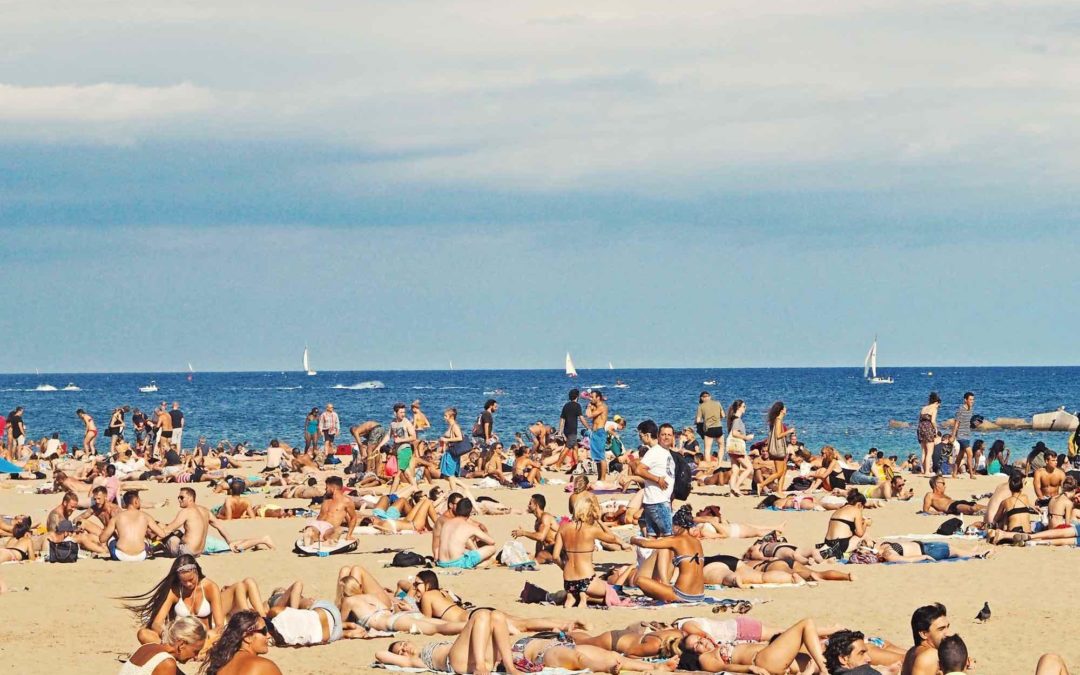Despite extensive media coverage highlighting the dangers of UV rays and the high risk of skin cancers associated with sun exposure, there still is a large population that view suntans as a “healthy” status symbol. The Costa del Sol attracts masses of visitors from Northern European countries on pilgrimage-like holidays for sunbathing binges. Even in November the beaches are covered with various shades of white, pink and red uncovered and unprotected flesh basking in the sun. The expense of soaking up those sunrays is more than just the air ticket and hotel. Bronzed bodies pay heavily for those hours on the beach or poolside in two ways – skin damage and a dramatically increased risk for skin cancer.
Sunrays emit ultraviolet light that we divide into categories based on wavelength – UVA, UVB and UVC.
The two rays that make it through the ozone layer, UVA and UVB, cause the skin damage that is frequently referred to as “normal aging”, including wrinkles, loss of elasticity, brown spots and easy bruising. Your total lifetime amount of UV ray exposure plus your natural level of melanin, or skin pigment, protection determines the amount of skin damage caused by the sun.
UVB rays work on the epidermis, or the outer layer of the skin, and are thus the primary agent in suntans and sunburns. UVA rays, once thought to have a minor effect on the skin, instead have been shown as the more insidious participant in damaging your skin. UVA rays penetrate deeper into the skin and work more efficiently. While UVB rays peak during the midday and summer, UVA rays are intense all day and all year.
UVA and UVB rays accelerate the break down of collagen in the dermis, the middle layer of the skin, at an accelerated rate. The broken down collagen starts a chemical pathway that results in “solar scars” of disorganised collagen fibres. As the sun exposure continues these solar scars become visible as wrinkles.
UV radiation causes the formation of free radicals – unstable oxygen molecules that have one electron rather than two. Free radicals contribute to premature aging by further breaking down collagen but, more importantly, they cause cancer by changing a cell’s genetic material.
UV radiation further increases your cancer risk by suppressing the function of T lymphocytes and Langerhans cells, specialised cells found in the dermis that help fight cancer.
The “tan is healthy” is one of the biggest and most difficult myths to overcome in modern medicine. A tan is a defensive reaction to a damaging and dangerous barrage of UV radiation. While the sun can be psychologically healing and is one of the pleasures of living or visiting the Costa del Sol, use sun blocking creams with a minimum of SPF 30 before heading outdoors.
If one day you look in the mirror and realise your face is suddenly paying the price for all those years of sunbathing, book a consultation with me. Skin peels can help erase the evidence of a misspent youth on the beach!
This article was written by Dr. Joaquin Mut Oltra, Dermatologist at Clinica Santa Cecilia. Call us today at +34 95 252 1024 to set up your appointment with Dr. Mut.
